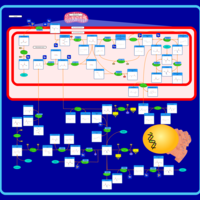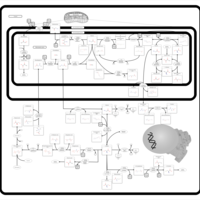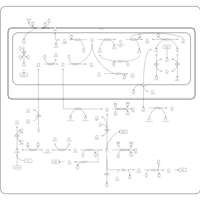| Description | Homocysteine (CAS: 454-29-5) is a sulfur-containing amino acid that arises during methionine metabolism. Although its concentration in plasma is only about 10 micromolar (uM), even moderate hyperhomocysteinemia is associated with an increased incidence of cardiovascular disease and Alzheimer's disease. Elevations in plasma homocysteine are commonly found as a result of vitamin deficiencies, polymorphisms of enzymes of methionine metabolism, and renal disease. It has been identified as a uremic toxin according to the European Uremic Toxin Working Group (PMID: 22626821 ). Pyridoxal, folic acid, riboflavin, and vitamin B(12) are all required for methionine metabolism, and deficiency of each of these vitamins result in elevated plasma homocysteine. A polymorphism of methylenetetrahydrofolate reductase (C677T), which is quite common in most populations with a homozygosity rate of 10-15 %, is associated with moderate hyperhomocysteinemia, especially in the context of marginal folate intake. Plasma homocysteine is inversely related to plasma creatinine in patients with renal disease. This is due to an impairment in homocysteine removal in renal disease. The role of these factors, and of modifiable lifestyle factors, in affecting methionine metabolism and in determining plasma homocysteine levels is discussed. Homocysteine is an independent cardiovascular disease (CVD) risk factor modifiable by nutrition and possibly exercise. Homocysteine was first identified as an important biological compound in 1932 and linked with human disease in 1962 when elevated urinary homocysteine levels were found in children with mental retardation. This condition, called homocystinuria, was later associated with premature occlusive CVD, even in children. These observations led to research investigating the relationship of elevated homocysteine levels and CVD in a wide variety of populations including middle age and elderly men and women with and without traditional risk factors for CVD (PMID: 17136938 , 15630149 ). Moreover, homocysteine is found to be associated with cystathionine beta-synthase deficiency, cystathioninuria, methylenetetrahydrofolate reductase deficiency, and sulfite oxidase deficiency, which are inborn errors of metabolism. |
|---|
| Pathways | | Name | SMPDB/PathBank |
|---|
| Glycine, serine and threonine metabolism |    | | Glycine, serine and threonine metabolism |    | | Tyrosine metabolism |    | | Methionine Metabolism |    | | Cystathionine Beta-Synthase Deficiency |    | | Dihydropyrimidine Dehydrogenase Deficiency (DHPD) |    | | S-Adenosylhomocysteine (SAH) Hydrolase Deficiency |    | | Methionine Adenosyltransferase Deficiency |    | | Glycine N-methyltransferase Deficiency |    | | Non Ketotic Hyperglycinemia |    | | Dimethylglycine Dehydrogenase Deficiency |    | | Sarcosinemia |    | | Methylenetetrahydrofolate Reductase Deficiency (MTHFRD) |    | | Hypermethioninemia |    | | Homocysteine Degradation |    | | Dimethylglycine Dehydrogenase Deficiency |    | | Hyperglycinemia, non-ketotic |    | | Gamma-cystathionase deficiency (CTH) |    | | Homocystinuria, cystathionine beta-synthase deficiency |    | | Homocystinuria-megaloblastic anemia due to defect in cobalamin metabolism, cblG complementation type |    | | 3-Phosphoglycerate dehydrogenase deficiency |    | | Sarcosine Oncometabolite Pathway |    |
|
|---|